Keeping Your Home Safe – Sanitizing or Disinfecting?
There is nothing like that feeling of satisfaction when you survey your newly cleaned home. But we all know that just because something looks clean, it doesn’t mean that it truly is clean, because germs that can cause illness are all around us. Some germs, such as Salmonella, E. Coli, canine parvovirus or Influenza can persist on hard surfaces all around us at home, at work and at school. Some can persist on those surfaces for a year or more. For more than a century now, we have been taught to sanitize and clean so as to remain healthy and germ free. Preventing the spread of illness through hard surface disinfection or sanitizing can help keep your family safe and healthy. But what ‘level of clean’ is appropriate for your home?
Here are some tips to help you decide what ‘level of clean’ is appropriate for your home and work place.
What is the difference between Disinfecting and Sanitizing?
A non-technical explanation is that disinfecting means that you kill 99.999% of germs within a certain time limit (usually not exceeding 10 minutes). Disinfecting ensures a high level of clean. Sanitizing means that you kill 99.9% of germs within 1 minute. The difference between 99.999% and 99.9% may not seem like much to you or me, but a microbiologist will tell you it is a big difference. Certainly it takes more work to achieve disinfection. Sanitizing, on the other hand, is a level of clean that is practical and realistic and can be achieved using diluted SNiPER in 1 minute.
How do I Know Whether to Disinfect or Sanitize?
You can think of disinfection and sanitizing as 2 points on a continuum. To the right is disinfected. In the middle is sanitized. To the left is dirty. Disinfection will require a high degree of care to achieve. This means more work. Often, however, that level of cleanliness is what is needed. If, for example, you brought home a new puppy and then discovered that the pup had canine parvo virus, you would need to thoroughly disinfect, because that is a really difficult pathogen that can live for a long time on a wall or something, just waiting for the right conditions to activate again.
Your bathroom, for another example, is probably a place where you would want to get closer to disinfection. In other places, ‘sanitizing’ is likely a level of clean that is ‘clean enough’. We’ll never get rid of all the germs in our homes, but we can find the ‘degree of clean’ on that continuum where our families can live safely and happily.
Where Exactly are These Germs?
High-touch areas where many people will put their hands such as door knobs, light switches, computer keyboards and mice, refrigerator door handles, car door handles, telephones (both desktop and hand helds) even pencils and markers! Any surface where many hands touch is a candidate to spread germs.
Kitchen – the cutting board is a surface that needs to be cleaned regularly and well, lest that chicken you cut up spread germs (such as salmonella) to your tomatoes and lettuce. Sanitizing your cutting boards regularly will go a long way towards keeping your family safe. The door handle to your fridge – in addition to the inside – is another area where you can expect that germs will multiply if allowed. The sink drain area, being wet often, is a growth spot for germs. Add faucet handles to the list
Bathroom – as crazy as this may sound, there are studies showing that the bathroom is cleaner than your kitchen. This may or may not be true for you, but in many homes, bathrooms are the subject of frequent and intense cleaning. Especially when those homes have small children. High touch surfaces here would include the toilet flush handle, light switches, the hand towel, handles to the shower and cabinet doors. Don’t forget the shower floor!
Office – how many of you eat or drink at your desk? I know my computer keyboard is too scary to think about. Then there is also office equipment where many hands other than just yours touch.
Classrooms – all it takes is one kid coming to school with the flu, and it can spread rapidly.
Other hard surfaces that need regular cleaning include countertops, toys, changing tables and remote controls.
You can dilute SNiPER by 6 to 1 for no-rinse Sanitizing.
First, clean any mess that is present. Then just spray dilute SNiPER onto that surface, and walk away. It’s that easy. It’s that effective. Just one minute to a ‘sanitized’ level of clean!
Can I ‘sanitize’ food preparation surfaces such as cutting boards with SNiPER?
Yes, you can. Clean away any debris first, then spray diluted SNiPER onto the board – and walk away allowing it to air dry naturally. It’s that easy. It’s that effective. Again it is just one minute to a sanitized level of clean.
How do I use SNiPER to disinfect a hard surface?
Pre-Cleaning Instructions: Remove gross filth and heavy soil by cleaning. Thoroughly wet surfaces, by spray, sponge, mop, or immersion, with SNIPER® on to soiled surfaces then thoroughly clean and wipe away gross filth with sponge or cloth.
Disinfect Hard Non-Porous Surfaces: For disinfection of pre-cleaned hard non-porous surfaces such as glass, plastic, painted or finished wood, chrome, stainless steel, aluminum, polyurethane coated hardwood floors, glazed ceramic tile, sealed concrete and linoleum floors.
Disinfect Items such as appliances, bed frames, wheelchairs, chairs, counters, tables, doorknobs, cabinet handles, handrails, light switch covers, tubs, showers, toilets, faucets, sinks, waste containers, etc.
Spray SNiPER® at full strength wetting surfaces thoroughly. Allow surfaces to remain visibly wet for 5 minutes for disinfection of bacteria1. Allow surfaces to remain wet for 10 minutes for virus inactivation2.
Notes
1) Allow surfaces to remain visibly wet for 5 minutes for disinfection of Gram-negative bacteria and Gram-positive bacteria, Salmonella enterica ATCC 10708, Staphylococcus aureus ATCC 6538, Pseudomonas aeruginosa ATCC 15442, Methicillin Resistant Staphylococcus aureus (MRSA) ATCC 33591, Vancomycin Resistant Enterococcus faecalis (VRE) ATCC 51299.
2) Allow surfaces to remain wet for 10 minutes for virus inactivation of Swine Influenza virus, Type A (H1N1)* ATCC VR-
333 and Canine Parvovirus* ATCC VR-953.
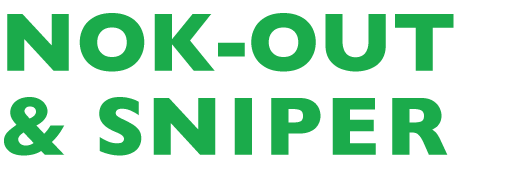
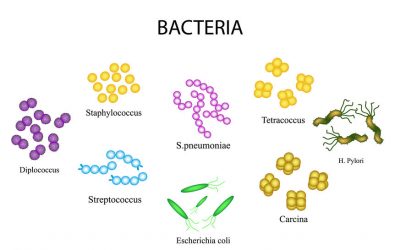
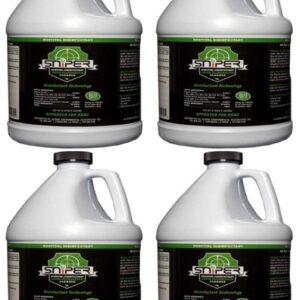

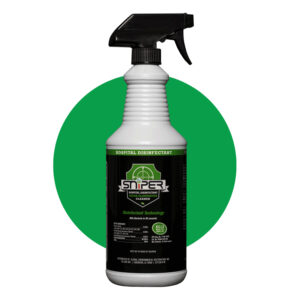
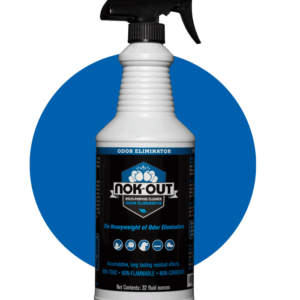
Does Sniper kill the covid19 virus?
Sniper is on the N list as number 71700-2: https://www.epa.gov/pesticide-registration/list-n-disinfectants-use-against-sars-cov-2
I have window seals with black mold, caused by condensation (my home is built without enough airflow.) When your description states it “cleans” does this mean it will remove the black stains? Help! It is awful and ugly. If this does not remove stains after using the product; any suggestions?
Hi Dawn,
Neither Nokout nor Sniper are “bleaching agents” and they will not effect a color change for you. You can make a paste of hydrogen peroxide and baking soda that can be applied and allowed to sit for an hour or two that does bleach the black away, though it is unlikely to 100% successful with just one application.
I hope that helps!